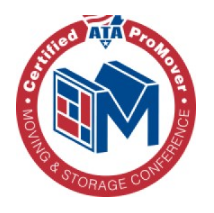Moving Out Soon? Your Guide to Start Saving Today

Moving out is a thrilling milestone that brings both excitement and financial challenges. Proper preparation and strategic saving are crucial for a smooth transition to independent living, requiring more than just accumulating a lump sum.
Beginning this process requires a thorough approach, from evaluating your current financial circumstances to preparing for lasting stability. By implementing effective saving techniques and making informed decisions about housing, you can confidently take this important step and move closer to independence.
The path to financial preparedness involves creating a personal budget, building an emergency fund, and researching affordable living options. With careful planning and smart financial decisions, you’ll be well-equipped to handle the responsibilities and joys of living on your own.
Assess Your Current Financial Situation
Understanding your financial situation is the first crucial step in preparing for a move. By examining your income, expenses, and potential savings areas, you’ll create a solid foundation for your financial planning.
Calculate Your Monthly Income
Start by determining your total monthly income after taxes. Include your primary job earnings, any side hustles, investments, or other regular sources of income. This figure serves as the baseline for your budget and helps you set realistic savings goals for your move.
Track Your Expenses
Carefully monitor your spending habits over a few months to get an accurate picture of where your money goes. Categorize your expenses into two main groups:
- Necessities: rent, utilities, groceries
- Discretionary spending: entertainment, dining out
This process reveals spending patterns and highlights areas where you might be overspending.
Identify Areas for Potential Savings
Analyze your expense tracking results to find opportunities for cutting costs. Consider the following:
- Look for subscriptions you rarely use
- Identify frequent impulse purchases
- Check for high utility bills that could be reduced
You might also consider implementing the 50-30-20 rule:
- 50% of income allocated to needs
- 30% to wants
- 20% to savings and debt repayment
By thoroughly assessing your financial situation, you’ll gain clarity on your current standing and identify concrete steps to improve your savings potential. This knowledge forms the cornerstone of your plan to save for moving out, setting you on the path to financial independence.
Set Clear Financial Goals
Establishing specific financial objectives is crucial for successfully saving to move out. By setting clear targets, you’ll create a roadmap for your savings journey that encompasses your move-out date, initial costs, and future living expenses.
Determine Your Target Move-Out Date
Choose a realistic move-out date that allows sufficient time to save and prepare. Consider factors such as lease agreements, job situations, and personal readiness when setting this goal.
- Be flexible with your timeline to accommodate unexpected changes
- Account for the duration of a move in your planning, as this can impact your budget
Estimate Initial Moving Costs
Calculate the upfront expenses associated with your move to ensure you’re financially prepared. These costs typically include:
- Security deposits
- First month’s rent
- Moving services
- New furniture or appliances
- Home essentials
Use a moving services cost calculator to get a more accurate estimate of transportation and labor costs. This tool can help you budget more effectively and avoid surprises.
Project Monthly Living Expenses
Forecast your regular monthly costs in your new living situation to maintain financial stability after the move. Consider researching:
-
- Average rent prices in your target area
- Typical utility costs
- Grocery expenses
- Transportation costs
- Insurance premiums
- Debt payments
Don’t forget to add a buffer for unexpected expenses to ensure your budget is realistic and sustainable. This extra cushion can provide peace of mind as you transition to independent living.
By setting clear financial goals, you create a focused strategy for saving and preparing for your move. These targets will guide your efforts, helping you stay motivated and focused as you work on achieving financial independence and your new living arrangement.
Create A Comprehensive Savings Plan
Developing a robust savings strategy is crucial for achieving your move-out goals. A well-structured plan will help you allocate your income effectively, automate your savings, and maximize your returns through smart account choices.
Implement The 50-30-20 Budgeting Rule
The 50-30-20 rule offers a straightforward approach to budgeting your income:
- 50% for necessities (rent, groceries)
- 30% for wants (entertainment)
- 20% for savings and debt repayment
This balanced approach ensures consistent saving while maintaining a realistic lifestyle.
Automate Your Savings
Make saving a priority by setting up automatic transfers from your checking to your savings account each payday. This “set it and forget it” method ensures you save before spending on other expenses.
- Start with a small percentage of your income
- Gradually increase as you adjust your spending habits
Explore High-Yield Savings Accounts
Boost your savings potential by researching high-yield savings accounts offered by various banks and credit unions. These accounts typically offer higher interest rates than traditional savings accounts, helping your money grow faster.
When choosing an account, consider:
- Interest rates
- Minimum balance requirements
- Associated fees
By implementing a detailed savings plan, you’ll be better positioned to reach your financial goals for moving out. Remember to regularly review and adjust your strategy as your income or circumstances change, ensuring you stay on course to achieve independence.
Boost Your Income
Increasing your income is a powerful way to accelerate your savings and achieve your move-out goals faster. By exploring additional revenue streams and maximizing your earning potential, you can create a stronger financial foundation for independent living.
Seek Part-Time Or Freelance Opportunities
Look for part-time jobs or freelance gigs that complement your current schedule. Consider these flexible options:
- Tutoring
- Pet-sitting
- Driving for ride-sharing services
- Virtual assistance
- Data entry
These opportunities can provide extra income without interfering with your main job or studies.
Monetize Skills And Hobbies
Turn your talents and interests into income-generating activities. Here are some ideas:
- Offer graphic design, writing, or photography services on freelance platforms
- Create and sell handmade items online
- Teach classes in your area of expertise
- Start a blog or YouTube channel in your niche
By leveraging your unique skills, you can create a sustainable side income stream.
Negotiate A Raise Or Promotion
If you’re currently employed, assess your value to the company and prepare a case for a salary increase. To strengthen your position:
- Highlight your achievements
- Outline additional responsibilities you’ve taken on
- Showcase new skills you’ve acquired
If a raise isn’t possible, discuss opportunities for advancement or additional training that could lead to a higher-paying position in the future. Remember, even a small increase in your primary income can significantly impact your savings over time.
By actively pursuing these income-boosting strategies, you’ll be better positioned to save for moving out and maintain financial stability in your new living situation.
Balance your efforts to increase income with maintaining a healthy work-life balance, ensuring you don’t burn out in the process of achieving your goals.
Minimize Current Expenses
Reducing your current expenses is a crucial step in saving for your move. By carefully examining your spending habits and making strategic adjustments, you can free up more money for your savings goals without sacrificing your quality of life.
Reduce Non-Essential Spending
Take a close look at your discretionary expenses and identify areas where you can cut back. Consider the following:
- Limit dining out and entertainment costs
- Cancel unused subscription services
- Brew coffee at home instead of buying it daily
Remember, small changes can add up to significant savings over time.
Find Cost-Effective Alternatives
Maintain your lifestyle while spending less by exploring these options:
- Shop at thrift stores for clothing and household items
- Use coupons and discount codes for everyday purchases
- Explore free or low-cost entertainment alternatives:
- Local community events
- Outdoor activities
- Free museum days
Negotiate Bills And Subscriptions
Many service providers are open to offering better rates to retain customers. Here’s how you can save:
- Contact your phone, internet, and insurance providers to negotiate lower rates
- For subscriptions you want to keep, look for annual payment options
- Compare prices across different providers to ensure you’re getting the best deal
By implementing these strategies, you’ll be able to reduce your overall expenses and allocate more funds for your moving out savings. Every dollar saved brings you one step closer to your goal of independent living.
Build An Emergency Fund
An emergency fund is a crucial financial safety net when moving out on your own. It provides peace of mind and financial stability, helping you handle unexpected expenses or income disruptions without derailing your independence.
Set A Target Amount (3-6 Months Of Expenses)
Aim to save between three to six months’ worth of living expenses in your emergency fund. This may appear challenging, but it’s feasible with proper planning. Here’s how to determine your target amount:
- Calculate your monthly expenses, including rent, utilities, food, and other necessities
- Multiply this figure by 3-6, depending on your comfort level and job stability
- The resulting sum is your emergency fund goal
Prioritize Emergency Savings
Make building your emergency fund a top priority in your savings plan. To ensure consistent progress:
- Allocate a specific portion of your income to emergency savings
- Treat this allocation as a non-negotiable expense in your budget
- Consider automating transfers to your emergency fund account
Keep Funds Easily Accessible
Store your emergency fund in a readily accessible account. This strategy ensures quick access to funds when needed, without penalties or delays. Consider these options:
-
- High-yield savings accounts
- Money market accounts
- Short-term certificates of deposit (CDs)
Avoid investing these funds in volatile markets or tying them up in long-term investments. The goal is liquidity, not high returns.
By building a robust emergency fund, you’ll be better prepared for the financial uncertainties that come with independent living. This financial cushion will provide you with greater confidence and stability as you take the next step of moving out and managing your own household.
Tackle Existing Debt
Addressing existing debt is a crucial step in preparing to move out. By reducing your debt burden, you’ll free up more of your income for savings and living expenses, setting yourself up for greater financial stability in your new living situation.
Prioritize High-Interest Debts
Focus on paying off high-interest debts first, such as credit card balances or personal loans. These debts cost you the most in interest over time, so eliminating them quickly can significantly improve your financial health.
- Create a list of your debts, ordered by interest rate
- Allocate extra payments to the highest-interest debt
- Maintain minimum payments on other debts
Consider Debt Consolidation
Debt consolidation can simplify your repayment process and potentially lower your overall interest rate. This strategy involves combining multiple debts into a single loan or credit card with a lower interest rate.
- Research balance transfer credit cards or personal loans
- Look for favorable terms for consolidation
- Read the fine print and understand any associated fees
Explore Debt Repayment Strategies
Implement effective debt repayment strategies to accelerate your progress. Choose the strategy that best aligns with your financial situation and motivational needs.
- Debt Avalanche Method:
- Pay off debts in order of highest to lowest interest rate
- Saves more money in interest over time
- Debt Snowball Method:
- Focus on paying off the smallest balances first
- Provides psychological wins to keep you motivated
By tackling your existing debt systematically, you’ll improve your credit score, reduce financial stress, and increase your capacity to save for moving out.
Becoming debt-free or significantly reducing your debt load will provide you with more financial freedom and options as you transition to independent living.
Research And Plan For Future Living Costs
Planning for future living costs is crucial when preparing to move out. Understanding and budgeting for these expenses will help you determine your savings target and maintain financial stability after your move.
Estimate Rent And Utilities
To get a realistic idea of housing costs:
- Research average rental prices in your desired area
- Factor in additional expenses like electricity, water, gas, and internet
- Consider setting up a spreadsheet to track these estimates
Adjust your savings goals based on these projections to ensure you’re adequately prepared.
Factor In Transportation Expenses
Transportation costs can significantly impact your budget. Calculate expenses for:
- Public transit
- Car payments
-
- Insurance
- Fuel
- Maintenance
- Parking (if applicable)
If you’re relocating, research local transportation options and factor in any changes to your commute. This forethought will help you avoid unexpected financial strain.
Budget For Groceries And Household Items
Allocate funds for groceries, cleaning supplies, and other household essentials. To create a realistic budget:
- Track your current spending on these items
- Adjust for potential changes in your new living situation
- Compare costs between home-cooked meals and dining out
Align your food budget with your lifestyle and financial goals to ensure sustainability.
By thoroughly researching and planning for these future living costs, you’ll gain a clearer picture of the financial requirements of independent living. This knowledge will help you set more accurate savings goals and pave the way for a smoother transition to your new home.
Invest In Your Future
While saving for moving out is crucial, it’s equally important to consider your long-term financial health. Investing in your future ensures financial stability and growth beyond the immediate goal of independent living.
Consider Retirement Savings
It’s never too early to start thinking about retirement savings, even as you prepare for your big move. Here are some steps to get started:
- Look into employer-sponsored 401(k) plans if available
- Consider opening an Individual Retirement Account (IRA)
- Start with small, regular contributions – they can grow significantly over time due to compound interest
Explore Investment Options
Familiarizing yourself with various investment vehicles can help you make informed decisions about growing your wealth. Consider these options:
- Stocks: Ownership shares in individual companies
- Bonds: Loans to corporations or governments
- Mutual funds: Professionally managed portfolios of stocks, bonds, or other securities
- Index funds: Low-cost funds that track a market index, offering diversification and potentially lower fees
Research online brokerages that offer educational resources and low fees for beginners. This can be an excellent way to start your investment journey.
Plan For Long-Term Financial Goals
Identifying and planning for long-term financial objectives is crucial for your overall financial health. Here’s how to get started:
- Identify your goals (e.g., buying a home, starting a business, funding further education)
- Create a timeline for each goal
- Develop a strategy to allocate funds for these objectives.
- Regularly review and adjust your financial plan to stay on track and adapt to changing circumstances
By investing in your future while saving for moving out, you’re setting yourself up for long-term financial success. This balanced approach ensures you’re not only prepared for immediate independence but also building a solid foundation for your financial future.
Frequently Asked Questions
- How much should I save before moving out?
The ideal savings amount varies based on individual circumstances. Aim to set aside three to six months’ worth of living expenses. This cushion should cover:
-
- Rent and utilities
- Food and groceries
- Transportation costs
- Emergency fund
Don’t forget to factor in one-time expenses like security deposits and moving costs when calculating your savings goal.
- What are some unexpected costs I should prepare for when moving out?
When budgeting for your move, consider these often-overlooked expenses:
-
- Utility deposits
- Renters insurance
- Furniture and household essentials
- Maintenance or minor repairs
- Potential periods of unemployment
It’s prudent to allocate funds for miscellaneous items such as cleaning supplies and kitchen basics. Maintaining a robust emergency fund is crucial for handling unforeseen circumstances.
- Is it better to rent or buy when moving out for the first time?
For most first-time movers, renting typically offers several advantages:
- Greater flexibility
- Lower upfront costs
- Fewer maintenance responsibilities
Renting allows you to acclimate to independent living and explore different neighborhoods before making a long-term commitment. However, if you have substantial savings and stable employment, purchasing a property might be worth exploring in certain markets.
- How can I save money on moving expenses?
To reduce moving costs, consider these strategies:
-
- Declutter and sell unnecessary items before moving
- Opt for a DIY move with help from friends
- Schedule your move during off-peak seasons
- Collect free boxes from local stores
- Use household items like towels for packing materials
These approaches can significantly cut down on expenses associated with professional movers and packing supplies.
- Should I consider getting a roommate to save on costs?
Sharing living space with a roommate can offer substantial financial benefits:
-
- Potential to halve rent and utility costs
- Shared expenses for household items
- Reduced overall living costs
This option is particularly advantageous in high-cost areas. However, it’s essential to carefully consider compatibility and establish clear house rules before committing.
While cohabitation can present challenges, the financial benefits frequently surpass the drawbacks for numerous young adults pursuing independent living.
Conclusion
Saving for moving out is a journey that demands a strategic approach, combining thorough financial planning, disciplined saving habits, and ongoing money management.
By taking the time to assess your current financial situation and set clear, achievable goals, you’re laying the groundwork for a successful transition to independent living.
Developing a detailed savings strategy is crucial. This includes:
-
- Creating a realistic budget
- Automating your savings
- Exploring high-yield savings accounts to maximize your money’s growth
Remember, building an emergency fund and tackling existing debts are equally important steps in securing your financial future. These safety nets will provide peace of mind as you face the challenges of living on your own.
Researching anticipated future living expenses is another important aspect of your preparation. By estimating expenses like rent, utilities, and groceries, you’ll be better equipped to handle the financial responsibilities that come with independence.
Moving out represents an exciting milestone in your life, offering new opportunities for personal growth and financial responsibility. With careful preparation and a solid financial foundation, you can approach this new chapter with confidence.
You’ll be ready to face the challenges and enjoy the rewards of living independently, knowing you’ve taken the necessary steps to ensure your financial stability.
Related Articles
Moving Guide to Boston: Essential Tips for a Successful Relocation

Boston stands as a beacon of opportunity, where colonial charm meets cutting-edge innovation. This historic city draws thousands of new residents annually with its world-class universities, thriving job market, and rich cultural heritage. Moving to this vibrant city demands careful consideration, from investigating the housing choices with a typical one-bedroom apartment price of $2,330 to […]
Read MoreComplete Moving Guide to Massachusetts: Cost, Jobs & Best Places

From renowned universities to thriving technology centers, Massachusetts enthralls newcomers with its seamless integration of historical allure and contemporary progress. The state’s diverse geography spans from Boston’s bustling urban area to the peaceful Berkshire hills, offering a variety of living options to accommodate different preferences. Massachusetts consistently ranks among America’s top states for education, healthcare, […]
Read More




